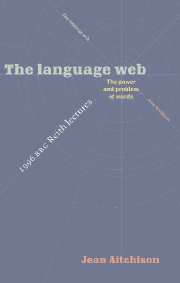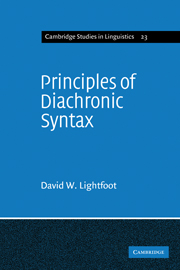How New Languages Emerge
New languages are constantly emerging, as existing languages diverge into different forms. To explain this fascinating process, we need to understand how languages change and how they emerge in children. In this pioneering study, David Lightfoot explains how languages come into being, arguing that children are the driving force. He explores how new systems arise, how they are acquired by children, and how adults and children play different, complementary roles in language change. Lightfoot makes an important distinction between 'external language' (language as it exists in the world), and 'internal language' (language as represented in an individual's brain). By examining the interplay between the two, he shows how children are 'cue-based' learners, who scan their external linguistic environment for new structures, making sense of the world outside in order to build their internal language. Engaging and original, this book offers an interesting account of language acquisition, variation and change.
- Presents an engaging account of how new languages come into being, and how this is driven by children
- Offers an alternative way of looking at how languages change and develop over time
- Will appeal to those working in historical linguistics, language variation, language acquisition, discourse analysis, and speech perception
Reviews & endorsements
'This expert study weaves together inquiries in theoretical and historical linguistics and acquisition of language, providing new ideas and insights about the nature of language and about the emergence of languages through history and in the individual. Lucidly written and accessible to a general audience, its original perspectives and acute analyses of wide-ranging empirical materials also provide fascinating challenges to those working at the borders of research in the many areas that Lightfoot engages. An impressive and very valuable contribution.' Noam Chomsky, Massachusetts Institute of Technology
'In How New Languages Emerge Lightfoot offers a convincing and elegant account for why major changes in language occur by putting the focus where it belongs: on the linguistic creativity of children and the input they receive from adults.' Mark Louden, University of Wisconsin
'… How New Languages Emerge is a rewarding read for all those interested in the interplay between language acquisition, variation and change. … I have no doubt that Lightfoot's book will incite discussion on the nature of language evolution and change.' Journal of Linguistics
Product details
February 2006Adobe eBook Reader
9780511138393
0 pages
0kg
This ISBN is for an eBook version which is distributed on our behalf by a third party.
Table of Contents
- Preface
- 1. Internal languages and the outside world
- 2. Traditional language change
- 3. Some properties of language organs
- 4. Languages emerging in children
- 5. New E-language cuing new I-languages
- 6. The use and variation of grammars
- 7. The eruption of new grammars
- 8. A new historical linguistics
- References
- Index.










